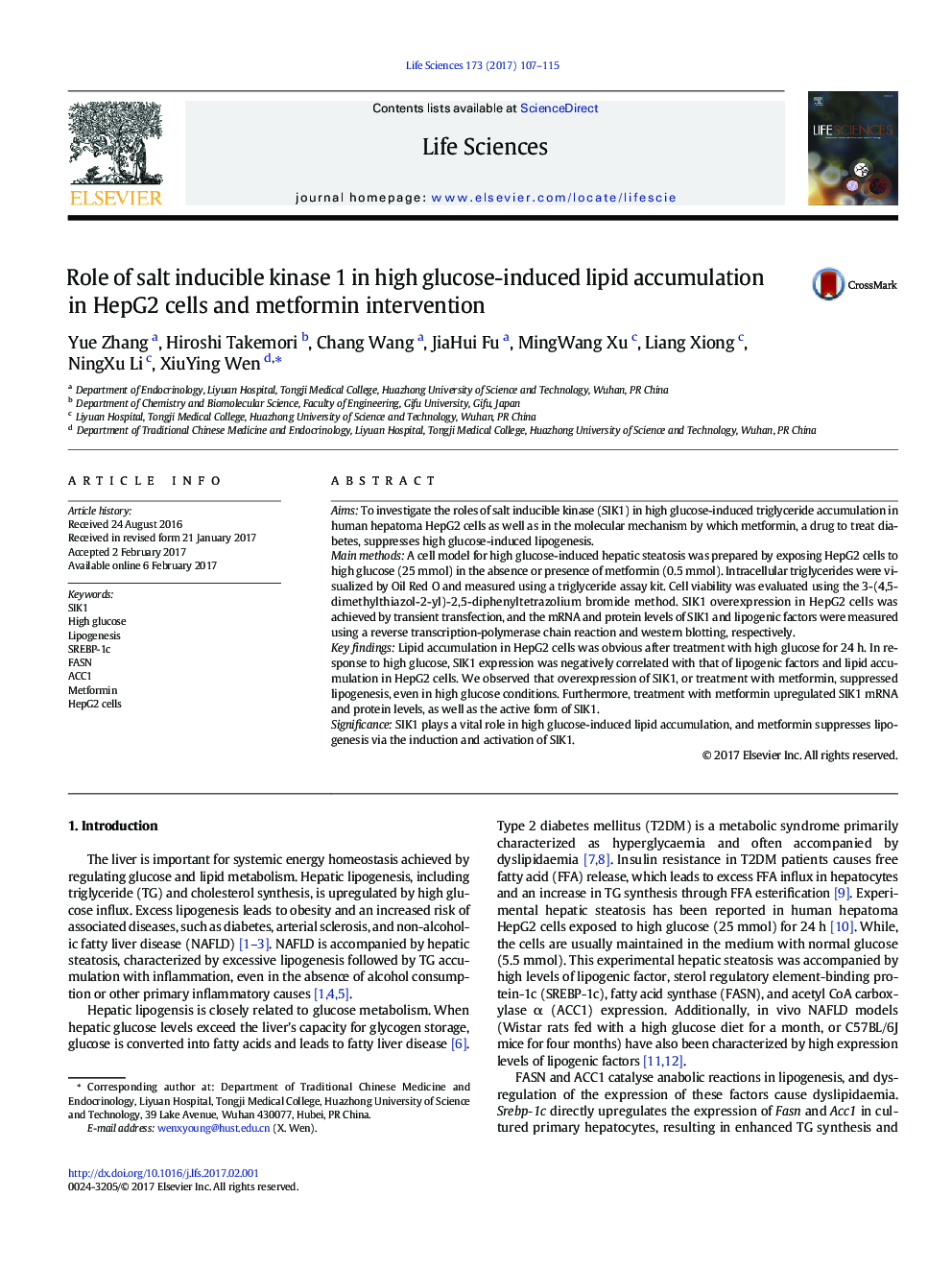| Article ID | Journal | Published Year | Pages | File Type |
|---|---|---|---|---|
| 5557047 | Life Sciences | 2017 | 9 Pages |
AimsTo investigate the roles of salt inducible kinase (SIK1) in high glucose-induced triglyceride accumulation in human hepatoma HepG2 cells as well as in the molecular mechanism by which metformin, a drug to treat diabetes, suppresses high glucose-induced lipogenesis.Main methodsA cell model for high glucose-induced hepatic steatosis was prepared by exposing HepG2 cells to high glucose (25Â mmol) in the absence or presence of metformin (0.5Â mmol). Intracellular triglycerides were visualized by Oil Red O and measured using a triglyceride assay kit. Cell viability was evaluated using the 3-(4,5-dimethylthiazol-2-yl)-2,5-diphenyltetrazolium bromide method. SIK1 overexpression in HepG2 cells was achieved by transient transfection, and the mRNA and protein levels of SIK1 and lipogenic factors were measured using a reverse transcription-polymerase chain reaction and western blotting, respectively.Key findingsLipid accumulation in HepG2 cells was obvious after treatment with high glucose for 24Â h. In response to high glucose, SIK1 expression was negatively correlated with that of lipogenic factors and lipid accumulation in HepG2 cells. We observed that overexpression of SIK1, or treatment with metformin, suppressed lipogenesis, even in high glucose conditions. Furthermore, treatment with metformin upregulated SIK1 mRNA and protein levels, as well as the active form of SIK1.SignificanceSIK1 plays a vital role in high glucose-induced lipid accumulation, and metformin suppresses lipogenesis via the induction and activation of SIK1.
